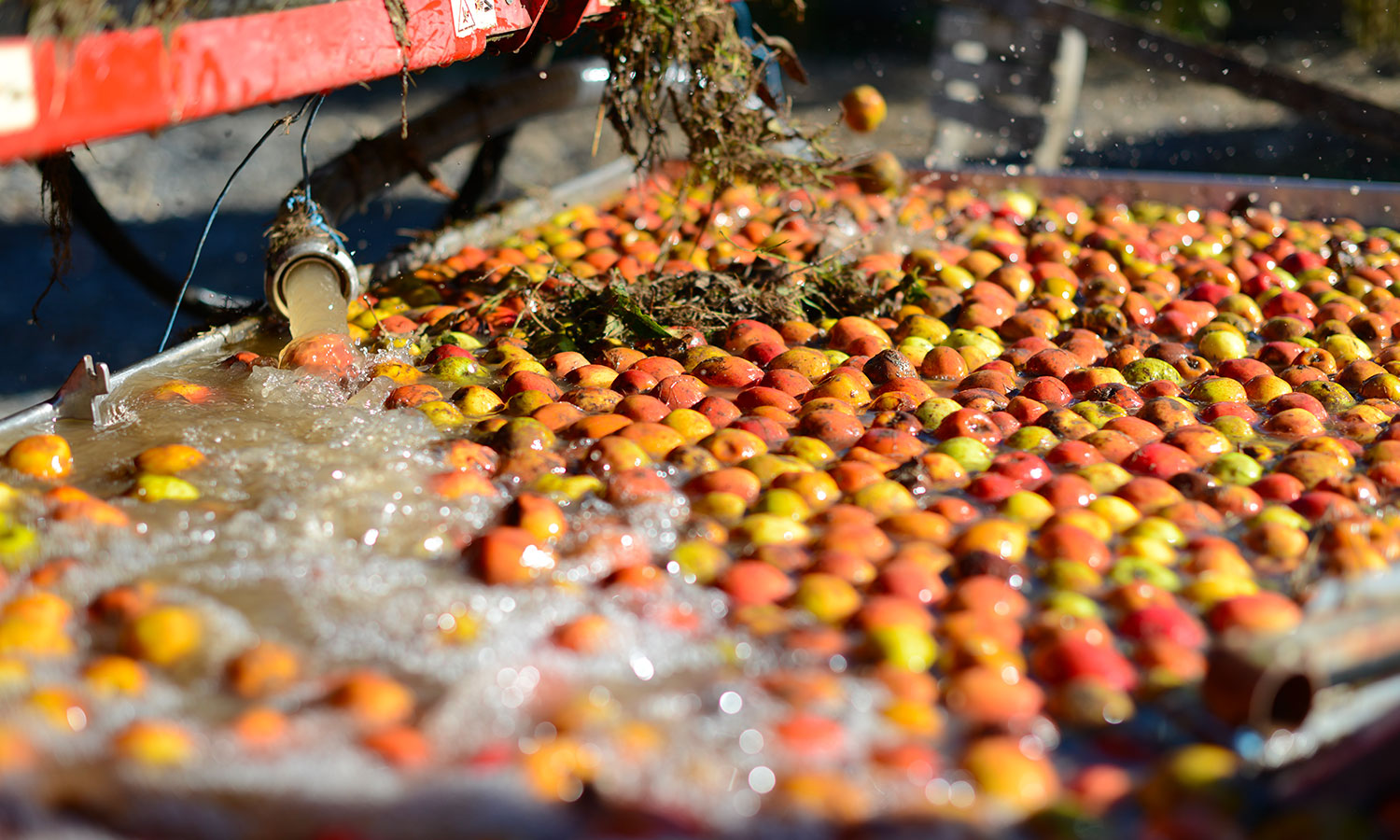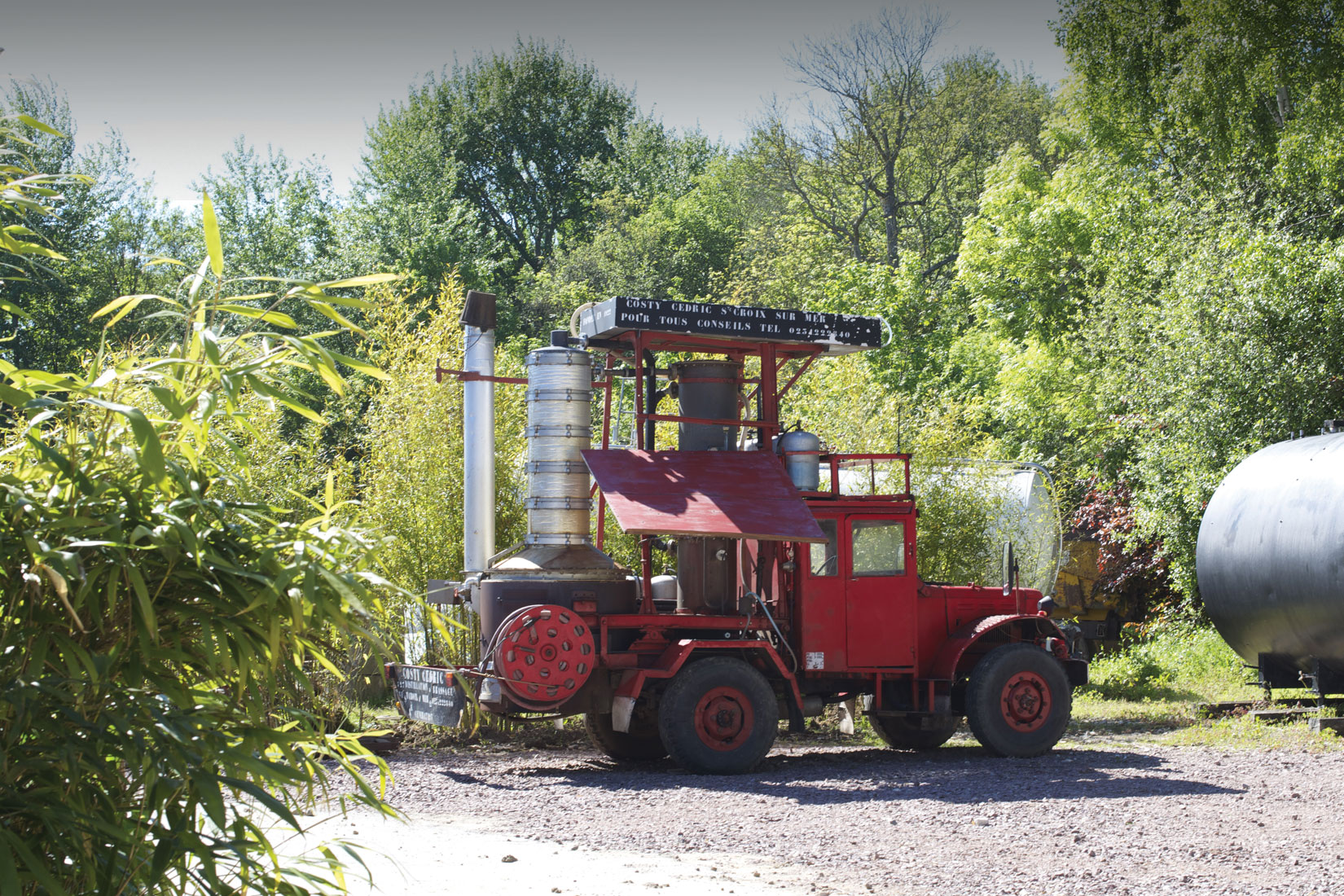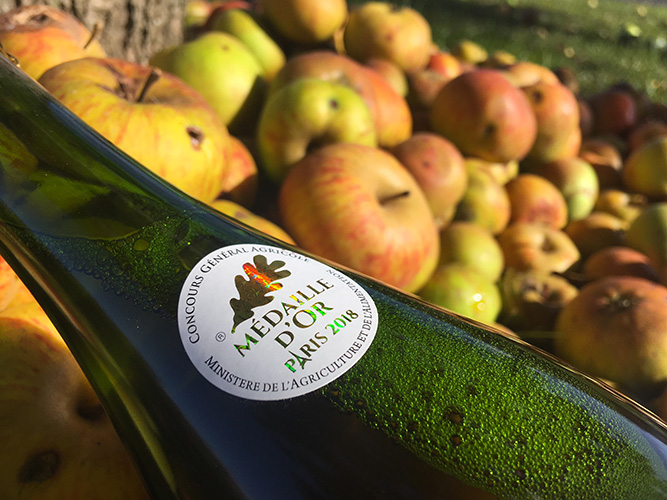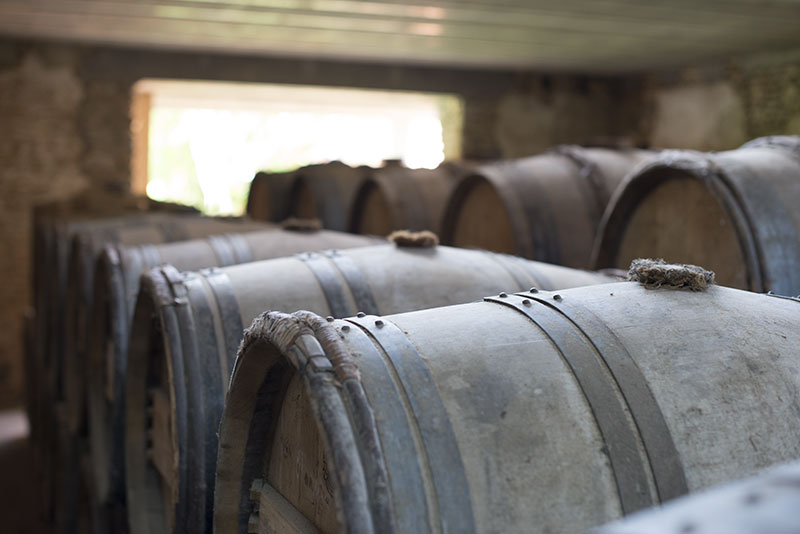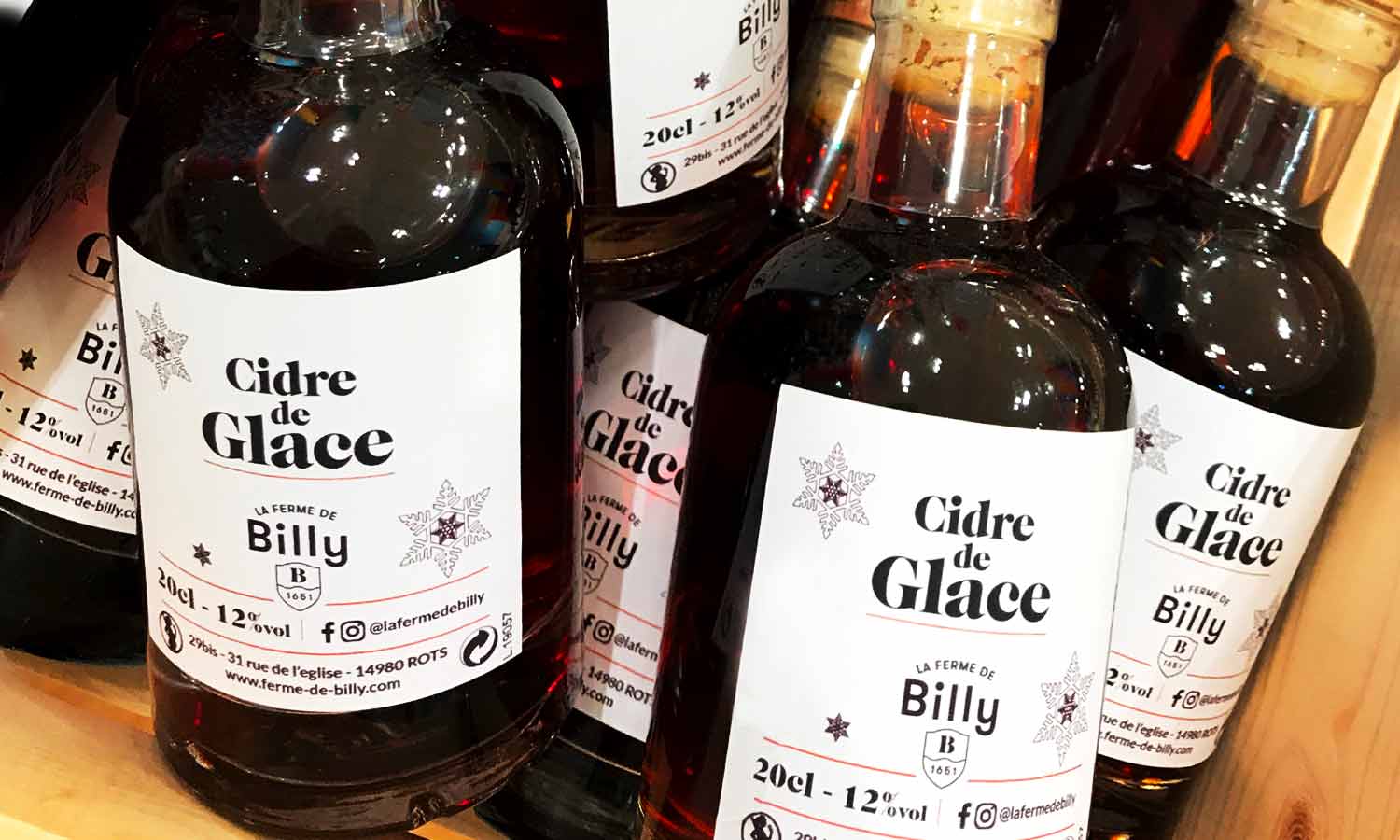The secrets of making real Nomandy cider
from tree to bottle
Maturation. The apples on the tree are full of starch which, when mature, is transformed into sugar. Unlike eating-apples that are picked directly from the tree – with cider apples you will need to wait until they have fallen on the ground before picking them. The thick, damp Normany grass at the foot of the trees acts as a buffer against falling trees and keeps the apples cool.
Apple picking takes place at full maturity, which occurs from September to early December. With 14 different varieties, some may reach maturity quicker than others, each one at its own pace. We use machines to pick the fruit off the ground. It is necessary to pass three times to pick up all the apples. They need little or no storage as they are brewed during the harvest. Some 20 to 25 tonnes of apples are pressed in this way each day.
Brewing. The apples are sorted by hand. Damaged apples are discarded, the good ones are washed and then grated in a rotating drum equipped with knives. We then obtain a regular pulp – pips, butts, crushed apple skins – which we will leave to settle for a while, this is known as the ‘cuvage’ process. Even at this stage beautiful amber and golden colours start to appear.
The pulp is then conveyed by a pump to a so-called « belt » press. Slowly compressed by the cylinders, the apple must, which is rich with all its aromas, just flows out.
This first apple juice called « must« , rust-coloured, heavily loaded with natural deposits, is then left to rest for a while before being sent to specially- numbered vats – a guarantee of the traceability of future blends.
fermentation, each to his own pace
The first musts of September are combined with young calvados to make the famous pommeau de Normandie. The so-called « mutage » of the must brings sugar and colour to a young calvados which will then age for a minimum of 14 months in oak barrels.
The mid-November varieties will be used to make apple juice. They are pasteurised so as to ensure better conversation.
The other musts start a natural fermentation in vats for cider before being bottled at the beginning of Spring. The cider, which is stored lying down, improves during these few months of storage, and at less than 15°C. Its foam becomes finer and more persistent. It will be marketed at least 3 months after the initial brewing process.
Our ciders are noted for the way we continue to use traditional methods which are becoming increasingly rare in French cider production. 100% pure cider, unpasteurised with apples of traditional and local varieties. It should be noted that the light veil and deposit sometimes present in the bottle are your guarantee of this natural fermentation.
a renowed and award-winning know-how expertise
Professionals and consumers appreciate La Ferme de Billy products for their 100% made in Normandy quality. Ciders, Apple Juice, Pommeau and Calvados from Normandy have been awarded many times over the years.
– Concours Général Agricole de Paris: ciders, apple juice and Pommeau de Normandie medals in 2009-2010-2011-2012- 2013-2014-2015-2017-2018-2019 & 2023 and Prix d’Excellence 2020
– Saint Jean des Cidres et Poirés competition: medal winner in 2013 – 2015 – 2016.
– The apple-basil rewarded at the Trophées de l’Agroalimentaire de Normandie 2012.
– The fruity cider awarded Gold Palm – Revelation note 93/100 at the International Vinalies 2023 Competition
– Ice cider gold medal at the International Vinalies 2019 & 2015 Competition and also silver medal at the Ciders of Normandy 2017 & 2018 Competition.
The AOP-AOC label is a quality and authenticity guarantee. Our pommeau and calvados from Normandy are therefre worthy heirs to the long Normandy cider-making tradition. They are particularly appreciated for their unique flavours.
– Multi-medal winner of the 2011-2013- 2014-2015-2018 Pommeau de Normandie award at the Cambremer PDO Competition
– calvados hors d’âge silver medal at the 2019 French Oenologists’ Competition and appointed Ambassador of the Calvados de Normandie 2018 Appellation.
This know-how is also recognised by the world of gastronomy and mixology. Beautiful tables, Michelin-starred chefs, delicatessens, but also trendy bars… trust us. We are very proud that Colin Fields, world-renowned barmaid chef of the Hemingway Bar at the Ritz-Paris, has been loyal to us for more than 10 years now!
calvados takes its time
Cider intended for calvados is aged for 6 months before being distilled using the column distillation technique. The purpose of distillation is to separate the alcohol from the water. When the heated cider reaches a temperature of 80°C, the aromatic particles and the alcohol rises in a mass of steam. The vapours will then be condensed to give the eau de vie which will derive from 71% of the still.
To obtain the right ageing and a beautiful aromatic signature, good barrels are also necessary. A mix of young barrels, rich in tannins, and old barrels, rich in aging and experience. Each brings a balance with distinct and complementary concentrations of aromas.
The most volatile alcohols will gradually evaporate through the pores of the wood. This is what we call the « angels’ share« , which is the sweet, slightly intoxicating perfume that floats in the air of our cellars.
Calvados builds up its own identity over time. It intensifies and becomes more complex over the years (between 2 and 25 years). Its bouquet: wood, flowers and plants. Its colour: transparent, golden and then amber. Its personality: round, intense, silky or robust.
ice cider, made in Normandy
Ice cider from La Ferme de Billy, a very special cider. Originally it was born in the great cold of Quebec. It was over in Quebec that it was first discovered that after picking frozen apples the cider produced had new and original taste qualities.
In Normandy, as temperatures do not allow the apples to freeze, a so-called cryo-concentration was used as an alternative. Once the apples are pressed, the apple must – which has just begins to ferment – is frozen in a refrigerated lorry at -15 to -20 degrees for more than a month. The result is a large ice cube which is left to melt and then emptied into a stainless steel tank. Once the water has been separated from the sugar, a more concentrated and sweet nectar is obtained – 10 to 15% of the total volume.
After fermentation for 2 to 3 months, it slowly ages for 1 or 2 years in oak barrels or vats. We then obtain an alcohol of about 10-12°, which is no longer sparkling, but remains very sweet., Normany ice cider has a sweet and sour taste that differs from the more acidic taste of that of our Quebecois counterparts.

